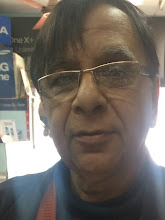Amenities
and Living Conditions of the four major urban
agglomerations/cities of Jharkhand State of India have been discussed
here. These are Ranchi, Bokaro, Dhanbad and Jamshedpur.
The four major cities of Jharkhand namely Ranchi, Bokaro, Dhanbad and Jamshedpur are the
major parts of the mentioned respective urban agglomerations. The Urban Quadrangle, comprising
Ranchi, Bokaro, Dhanbad and Jamshedpur have over half the ULB population in the
state.
RANCHI
Ranchi is the capital city of Jharkhand
state. Ranchi is one of the most urbanized districts of Jharkhand state. Out of
the total Ranchi district population of 29, 12,022 (2011 census), 43.18 percent
lives in urban regions of district. In total 1,257,340 people lives in urban
areas of which males are 654,655 and females are 602,685.
As per census 2011, population of
Ranchi city is 1,073,440, of which male and female are 559,031 and 514,409,
respectively.
Based on the results of Annual Health Survey, 2010, the
amenities
and living conditions of urban Ranchi district
are presented as below.
Two thirds of households have their
own houses. About 18 percent were living in Kutcha or semi-Pucca houses. Though
76 percent households had access to improved sources of drinking water, 51
percent were treating water to make it safer.
Whereas 29 percent were sharing
toilets, still about 10 percent were defecating in open. About 97 percent had
access to electricity. Though 58 percent were using LPG for cooking, 16 percent
were still using fire wood/dung cakes/ crop residues for cooking. As high as 84
percent had telephones/ mobiles and 26 percent even had computers.
JAMSHEDPUR
Steel City of Jharkhand is the
happening centre and pride of Jharkhand as well as India. Jamshedpur is the largest urban
conglomeration and most populous city in the state of Jharkhand. Jamshedpur is
the first planned industrial city of India, founded by the late Jamshedji
Nusserwanji Tata. It is also known as Steel City, Tata Nagar or simply Tata. Jamshedpur
is the headquarters of the East Singhbhum district of Jharkhand.
As per census 2011 the population of urban Purbi
Shinghbhum is about 12.72 lakhs. According to the 2011 census of India, the
Jamshedpur has a population of 13, 37,131; the Jamshedpur urban agglomeration
(UA), which includes the adjoining areas, Jamshedpur UA is the third Largest
city in Eastern India after Kolkata and Patna. It ranks 36th among the 53 million-plus
cities in India. It is located on the Chota Nagpur plateau and is surrounded by
the picturesque Dalma Hills. The city is bordered by the rivers Subarnarekha
and Kharkai on the north and west parts of the city.
Based on the results of Annual Health Survey, 2010, the
amenities and living conditions
of urban East Singhbhum district are
presented as below.
Only 60 percent households have their
own houses. As high as 23 percent were living in Kutcha or semi-Pucca houses.
Though 95 percent households had access to improved sources of drinking water,
only 19 percent were treating water to make it safer. Whereas 24 percent were
sharing toilets, still about 17 percent were defecating in open. About 95
percent had access to electricity. Though 58 percent were using LPG for cooking.
As high as 84 percent had telephones/ mobiles and 19 percent even had
computers.
DHANBAD
Dhanbad is famous for coal mining. Coal
mining, coal washing, and coke making are the main coal-related industries in
the city. The total urban population of
Dhanbad is 15,59,416 persons. According to the 2011 census, Dhanbad is among
the 53 cities of India with a population of more than one million and is the
42nd largest city. The total population of Dhanbad city is 1,161,561 persons.
Based on the results of Annual Health Survey,
2010, the amenities and living conditions
of urban Dhanbad
district are presented as below.
About 54 percent households have their
own houses. As high as 40 percent were living in Kutcha or semi-Pucca houses.
Though 94 percent households had access to improved sources of drinking water, 26
percent were treating water to make it safer.
Whereas 14% were sharing toilets,
still about 35% were defecating in open. About 97% had access to electricity. About
21 percent were using LPG for cooking. As high as 79 percent had telephones/
mobiles and 13 percent even had computers.
BOKARO
STEEL CITY
Bokaro Steel City is a major
industrial city in the State of Jharkhand. It is the district headquarters of
Bokaro which is one of the most industrialized zones. It is the home of the
largest steel plant in India.
In 2011, Bokaro had population of
2,061,918 of which male and female were 1,076,270 and 985,648 respectively. Bokaro
City has a total population of 413,934 persons. The Population density is 508
persons per square kilometer as compared to the Indian average of 324. This
indicates the immensely overcrowded habitat condition in the city.
Based on the results of Annual Health Survey,
2010, the amenities and living conditions
of urban Bokaro district are presented as below.
About 53% households have their own
houses. Over 10% were living in Kutcha houses. Though 92 percent households had
access to improved sources of drinking water. About 38% were treating water to
make it safer.
Whereas 12% were sharing toilets,
still about 35% were defecating in open. About 95% had access to electricity. About
38% were using LPG for cooking. As high as 84% had telephones/ mobiles and 7%
even had computers. Underline is that
the quite a few people of Bokaro love to have communication means even if they do
not have toilets in their homes.

No comments:
Post a Comment